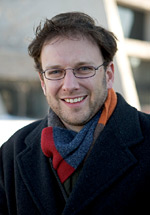From the editor: International Year of Physics
|
The United Nations declared 2005 as the International Year of Physics (IYP). Welcome as it is within the physics community, and though a fitting gesture to celebrate the centennial of Einstein’s annus mirabilis, what has the year achieved?
UN Resolution 58/293, which declared the Year, has unambitious goals, asking only for the organization of activities to celebrate the Year, with explicit inclusion of developing countries. An American Physical Society database lists 574 IYP events in the United States, certainly a sign of activity in this country. The particle physics community has played a role with projects such as Quantum Diaries, and a new Standard Model poster distributed to all schools in France and Canada, to name just two examples, both discussed in this issue of symmetry. Developing nations managed to run some IYP activities but didn’t receive much extra support from developed nations.
If you have an International Year, you might ask that–as a minimum–the population is aware of its existence. For comparison, over 50 percent of Australians and Britons are aware of their National Science Weeks according to polls conducted after the annual events. Are 150 million Americans at least aware that it was the International Year of Physics? No survey has been done but I doubt the IYP has reached anything like that audience, based on the level of activity. To be fair, how many people are aware that 2005 is also the International Year of Microcredit and the International Year for Sport and Physical Education?
So what opportunities can International Years offer? Can they realistically be anything more than fillips to communities, encouraging them to reach out to wider audiences and providing them with a hook for obtaining funding? That many physicists and educators have used the IYP as a reason for new outreach gives a hint as to the motivating power of the label “International Year of Physics.”
After the 2005 burst of activities, do we need to wait another century for a similar burst? If physicists want physics to be seen as relevant to society, as they must if they want society’s financial support, they will need to make stronger and sustained efforts to illustrate how physics plays its role in modern society. Unfortunately, these activities can not be successful if they are always lowest-priority, last-minute, ill-funded efforts. They should be seen as an important long-term investment in the field.
The IYP has reinforced one very important lesson: that the physics community has the capacity to do much more at visibly integrating with society. Waiting for the next IYP won’t be enough.
David Harris
Editor-in-Chief
Click here to download the pdf version of this article.



